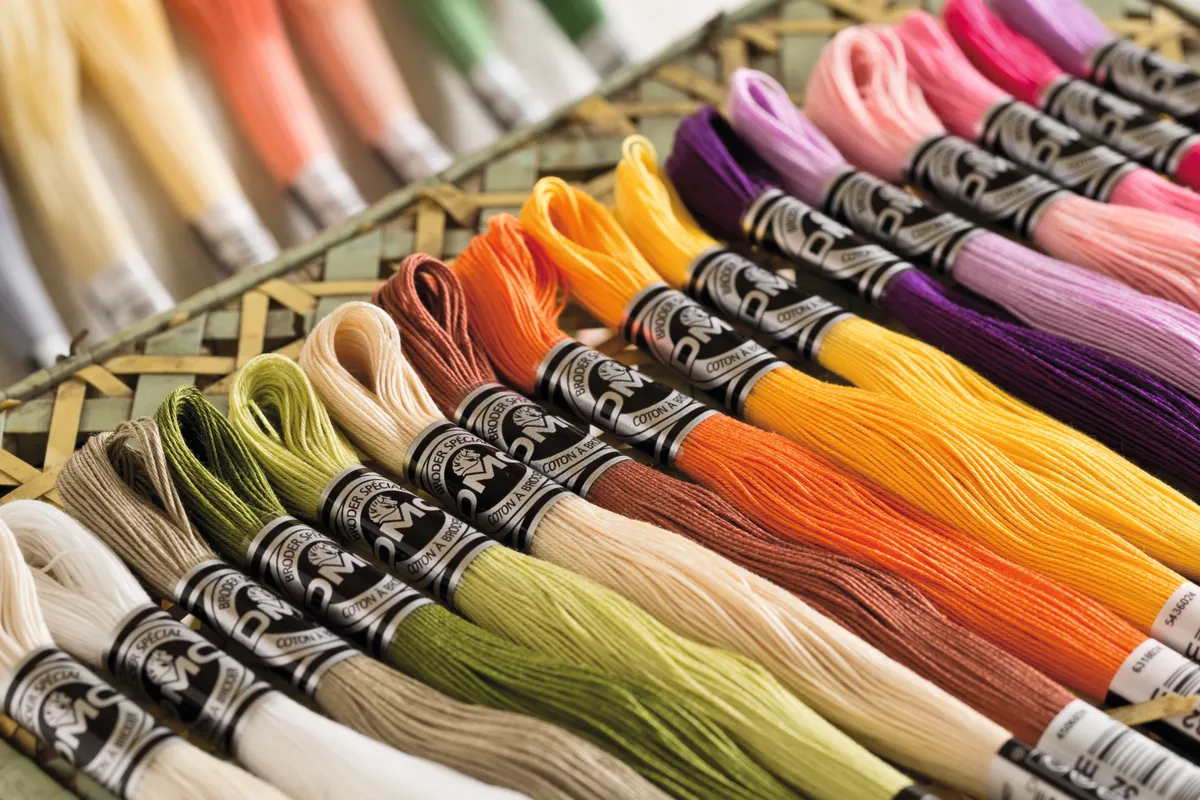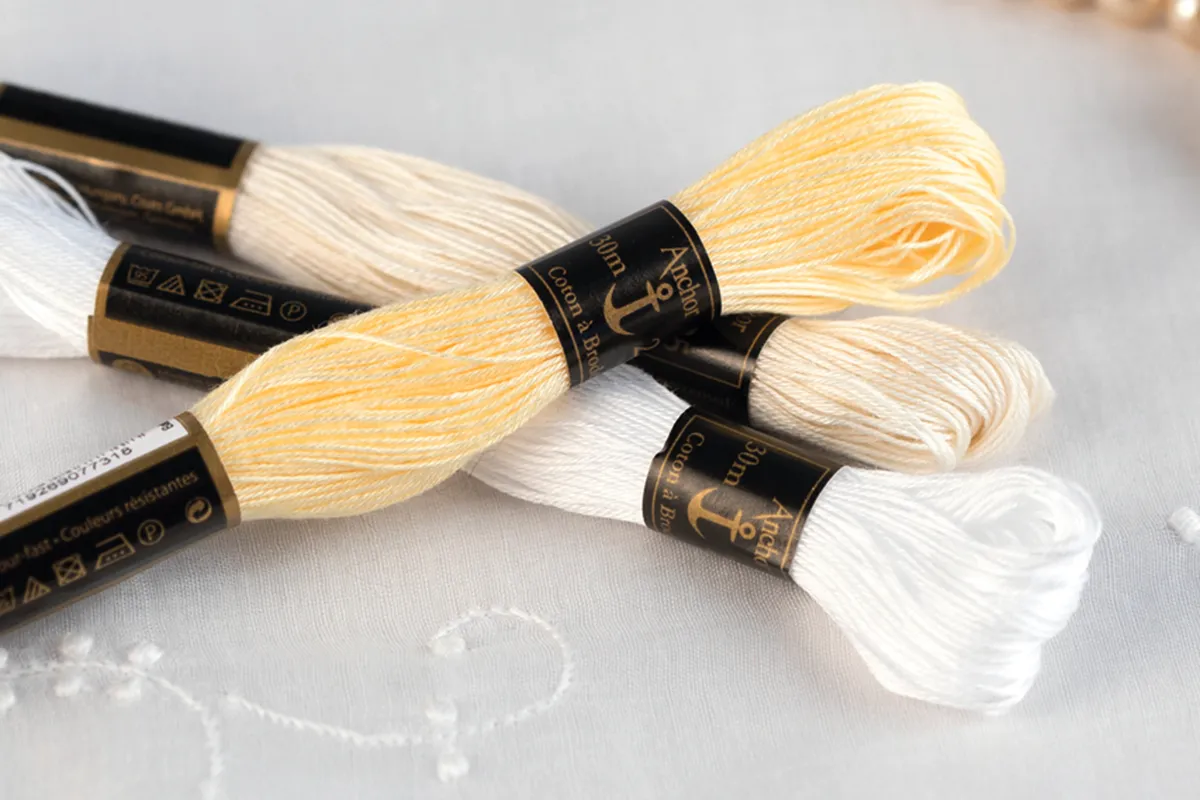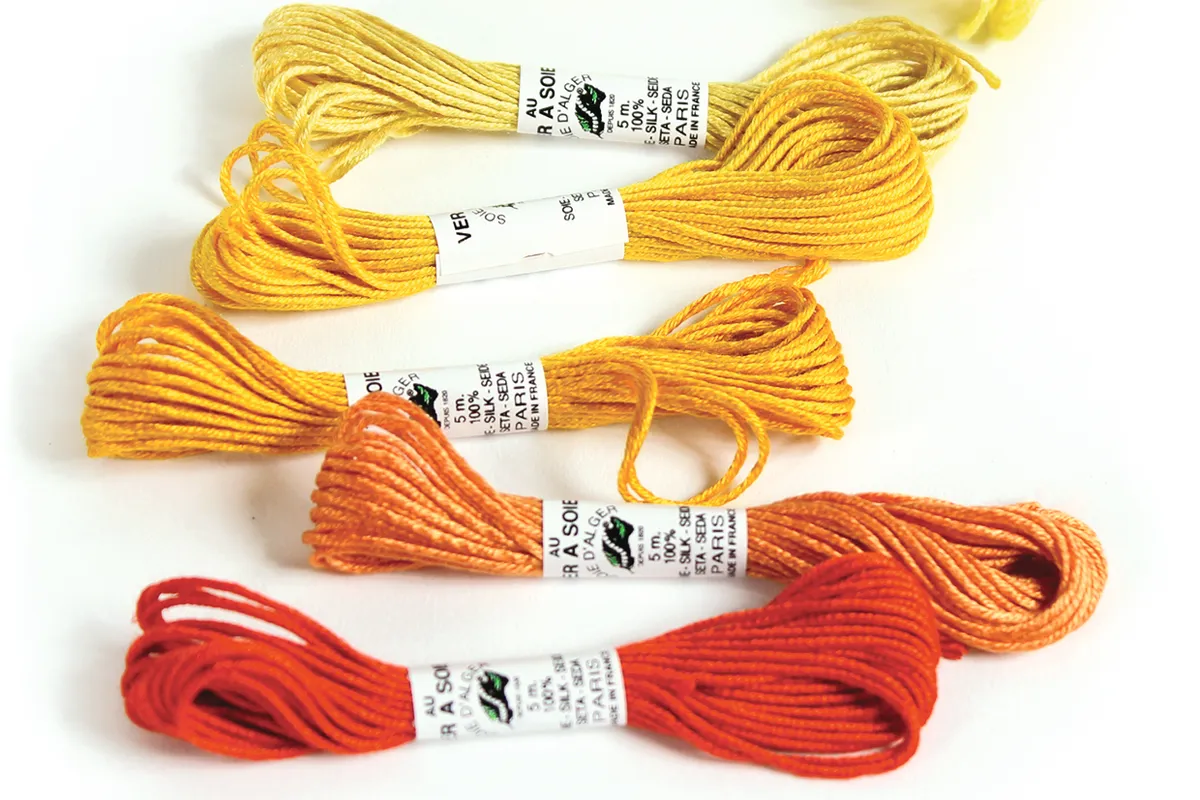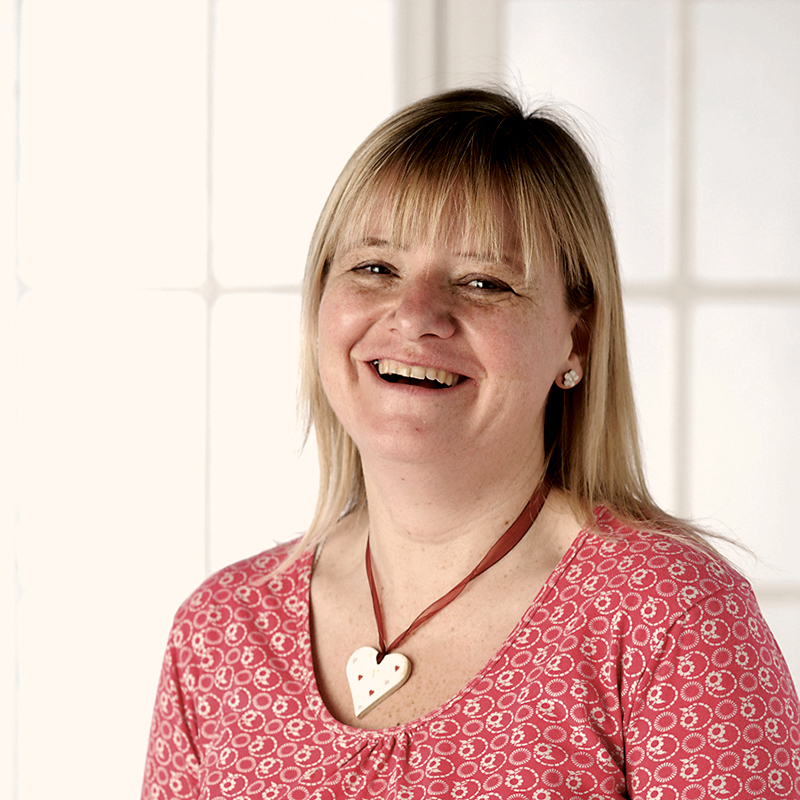There are so many different embroidery threads to choose form in an array of colours, weight and materials. When choosing embroidery thread, always think about how your finished embroidery will be used before you buy. It if will receive a lot of wear and tear you should use hard-wearing embroidery thread such as stranded cotton. However, if it going to be a decorative piece you can use finer embroidery thread such metallic and silk embroidery thread which can’t be as easily washed. It’s best to check the label of the embroidery thread you intend to buy to make sure you know how they should be cared for.
Another thing to bear in mind when choosing embroidery thread is how well the embroidery thread will cover the lines of your embroidery transfer, or the background fabric. You may need to experiment to get the thickness you require but there are a lot of varieties of embroidery thread to choose from.
Stranded cotton embroidery thread

This is a loosely twisted, six-strand thread. The strands can be separated so you can obtain different thicknesses by varying the number of strands in your needle. One strand forms a fine line which is good for small details or outlines, while six strands used together produce a bold, heavy line. Alternatively you can combine colours in the needle for a subtle shading or variegated effect. Stranded cotton is available in a wide variety of over 400 colours, which makes it a very popular thread to use. It is more commonly sold in pure cotton but is also available in silk and rayon. It is sometimes referred to as embroidery floss.
Cotton Perle embroidery thread

Also referred to as Pearl Cotton, this is a twisted two-ply thread which cannot be separated. Usually made from cotton, it has a slight sheen which can add interest to your work if used alongside other, more matt embroidery threads. It’s available in four weights and it can be bought in a wide variety of colours as well as blended with metallic filament. It’s often used in Hardanger embroidery.
Cotton a broder embroidery thread

Similar in weight to coton perlé, this is a lightly twisted single-strand thread and is also known as Special Embroidery Thread. It can be used for surface embroidery and is popularly used for blackwork, whitework and drawn thread embroidery too.
Soft cotton embroidery thread
This is a tightly-twisted five-ply thread that cannot be separated. It has a matt finish and is best for embroidering on heavier weight fabrics, in particular on wool and flannel. It gives a lovely chunky look to the finished stitches.
Flower embroidery thread
This is a soft, fine, single strand thread which is available in a wide range of soft, natural colours. It is often used in counted thread as an alternative to stranded cotton but works equally well in surface embroidery
Silk embroidery thread

Available in twisted or stranded varieties, this luxury thread is ideal for stitching on fine fabrics where extra quality is important.
Crewel wool embroidery thread
This 2-ply wool, which cannot be separated is available in many colours and used for fine embroidery and Crewel Work. This is a type of surface embroidery using wool with a very long heritage. It’s very adaptable as interesting effects and shades can be created by combining more than one colour in the needle. Crewel wool is usually worked on heavier weight fabrics, particularly wool and linen twill using traditional patterns and motifs and using a Crewel needle.
Metallic embroidery thread

Available in many weights and textures, these threads are best reserved for special effects as they are not very hard wearing and can be a little unruly to work with. Some threads, such as blending filaments can be combined in the needle with other kinds of thread to give a slight sheen or sparkle to your embroidery. Always work with shorter lengths of about 30cm and coat it with a thread conditioner to aid smoother stitching.
